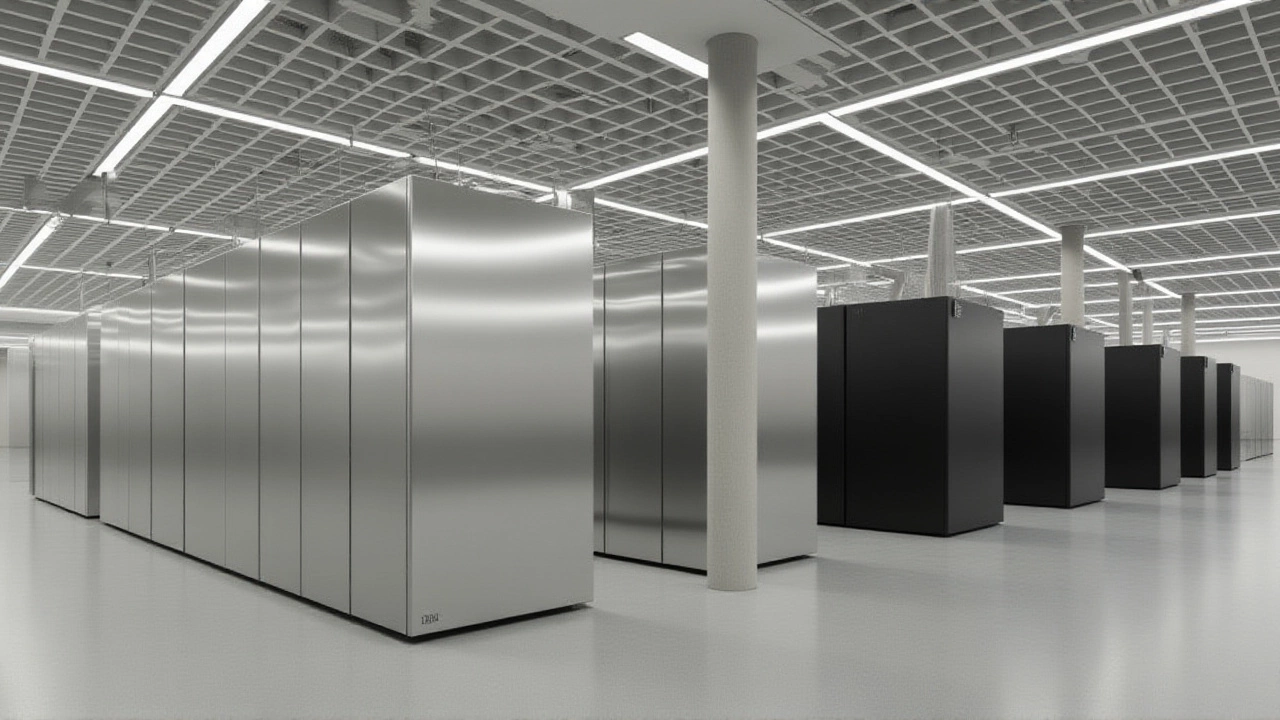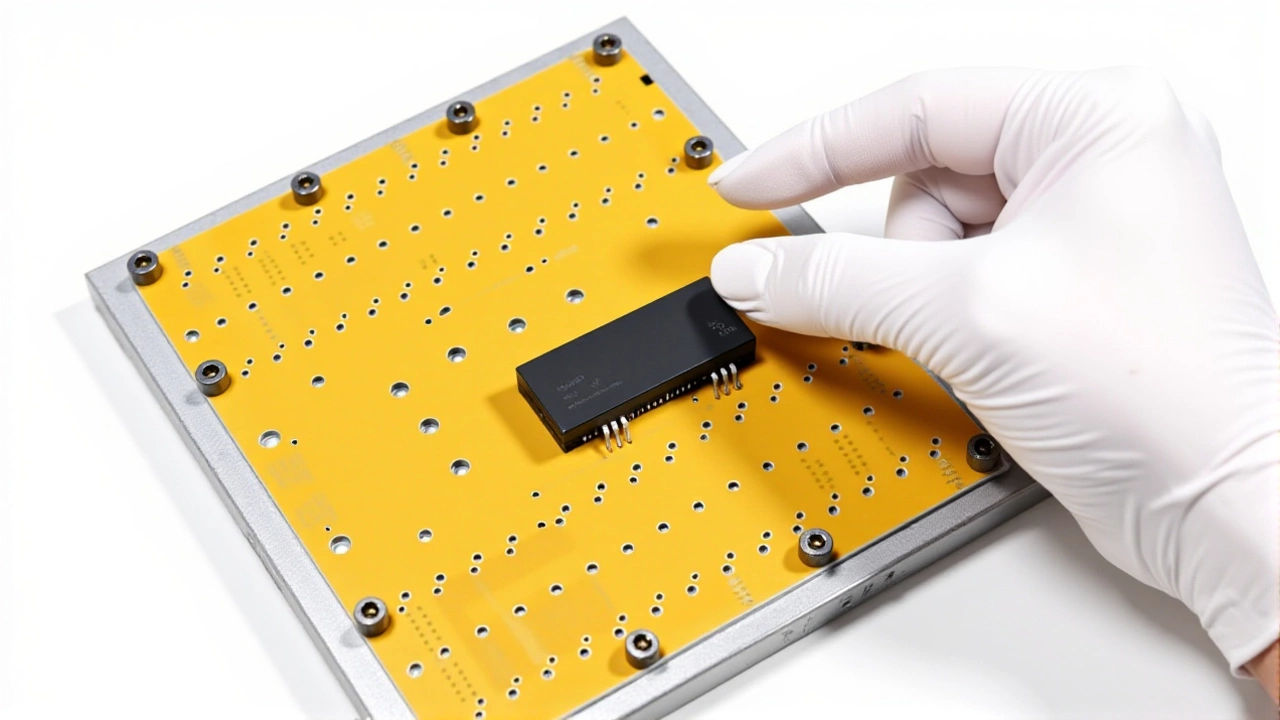
IBM just changed the game in quantum computing. On November 12, 2025, at the Georgia World Congress Center in Atlanta, the company unveiled its next-generation Quantum Nighthawk processor — a 120-qubit machine designed to deliver real-world quantum advantage before the year ends. And it’s not just hype. The first Nighthawk chips will be live on the IBM Quantum Platform by December 31, 2025. That’s not a projection. That’s a deadline. Jay Gambetta, IBM Fellow and director of IBM Research, made it clear: we’re not waiting for fault tolerance to start seeing practical results. We’re building them now.
What Makes Nighthawk Different?
The secret isn’t just more qubits. It’s how they talk to each other. Nighthawk packs 218 next-generation tunable couplers — a 20% jump from its predecessor, the Quantum Heron. That means each of its 120 qubits can connect to four immediate neighbors in a square lattice, dramatically improving circuit fidelity. The result? Quantum circuits 30% more complex than Heron can run with the same low error rates. Think of it like upgrading from a two-lane road to a four-lane highway — same number of cars, but they move faster, smoother, and with fewer crashes.
IBM’s numbers are specific: Nighthawk can execute 5,000 two-qubit gates. That’s not theoretical. It’s measurable. And by December 31, 2026, the next iteration will hit 7,500. Then 10,000 in 2027. And by 2028? A full 15,000 two-qubit gates — powered by over 1,000 connected qubits using long-range couplers first tested in 2024. This isn’t a leap. It’s a ladder. Each rung built on the last.
Quantum Loon: The Quiet Revolution
While Nighthawk grabs headlines, Quantum Loon might be the real game-changer. IBM calls it an "experimental processor," but that undersells it. Loon isn’t meant for immediate use. It’s a testbed for fault tolerance — the holy grail of quantum computing. Its novel architecture uses longer couplers to physically bridge qubits across a single lattice, reducing decoherence and stabilizing entanglement. In plain terms: it keeps quantum states alive longer. That’s critical. Right now, qubits lose their state faster than a smartphone battery in cold weather. Loon is IBM’s attempt to fix that before it becomes a bottleneck.
"Our goal has always been to deliver fault-tolerant quantum computers," Gambetta told reporters on November 7, 2025, at IBM’s Yorktown Heights facility in New York. "But to go on a path where we’re always delivering our best platform."

Why This Matters to Everyone
Quantum advantage doesn’t mean your laptop will run quantum code. It means pharmaceutical companies will simulate protein folding in days instead of decades. Financial firms will optimize global portfolios with impossible precision. Climate models will incorporate quantum-level molecular interactions. And it’s not science fiction — it’s coming faster than most expected.
IBM’s roadmap, published on ibm.com/roadmaps/quantum/2025, shows a clear progression: Nighthawk isn’t an end point. It’s the foundation for tools that merge quantum computing with high-performance computing (HPC). By late 2025, researchers will be able to run hybrid algorithms — quantum for the hard parts, classical for the rest. That’s how you get real results today, even before full fault tolerance.
Who’s Behind This?
International Business Machines Corporation (NYSE: IBM), headquartered at 1 New Orchard Road in Armonk, New York, has spent over two decades quietly building this. While competitors chased qubit counts, IBM focused on connectivity, error correction, and software integration. That’s why they’re ahead. Other companies announced 400-qubit machines last year. But if those qubits can’t talk to each other reliably, it’s like having 400 phones with no signal. IBM’s 120-qubit Nighthawk? It’s got a full network.
The pace has accelerated. IBM’s original 2023 roadmap targeted quantum advantage for 2027. Now it’s 2026. That’s a full year shaved off. And fault-tolerant quantum computing? Still on track for 2029. But now, it feels less like a distant dream and more like a scheduled delivery.

What’s Next?
By early 2026, academic labs and Fortune 500 R&D teams will start testing Nighthawk on real-world problems: drug discovery, logistics optimization, battery chemistry. The first commercial wins — likely in materials science or finance — could come within months. Meanwhile, IBM’s team in Yorktown Heights is already designing the next Nighthawk variant. The 2028 chip, with its long-range couplers, will be the first to truly blur the line between quantum and classical computing.
The twist? IBM isn’t just selling hardware. It’s selling access. Through the IBM Quantum Platform, universities, startups, and even government agencies can run experiments on Nighthawk — no lab needed. That democratization is as important as the hardware itself.
Frequently Asked Questions
How does Nighthawk compare to competitors’ quantum processors?
While companies like Google and Quantinuum have announced processors with higher qubit counts, IBM’s Nighthawk leads in connectivity and gate fidelity. Its 218 tunable couplers enable four-way qubit linking — more than any rival’s current architecture. Competitors focus on raw qubit numbers; IBM focuses on usable computation. Nighthawk’s 5,000 two-qubit gate capacity is already higher than most systems can reliably execute.
What does "quantum advantage" actually mean in practice?
Quantum advantage means a quantum computer solves a problem faster, cheaper, or more accurately than any classical computer ever could. For IBM, this could mean simulating a new catalyst for green hydrogen production in hours instead of years. It’s not about speed alone — it’s about solving problems that are literally impossible for classical machines. Early wins will likely appear in chemistry and finance, not consumer apps.
Why is IBM releasing Nighthawk before full fault tolerance?
Because waiting for perfection delays progress. IBM’s strategy is "deliver your best platform now." Nighthawk’s improved connectivity reduces error rates enough to run meaningful algorithms. Researchers can use it alongside classical supercomputers (HPC) to solve real problems today — while IBM builds the fault-tolerant systems of tomorrow. It’s a pragmatic path, not a theoretical one.
Can businesses access Nighthawk today?
Yes — through the IBM Quantum Platform. Clients with enterprise agreements can request access starting December 31, 2025. Academic institutions and government labs already have priority access via IBM’s Quantum Network. No hardware purchase is needed. You log in, run circuits, and get results. It’s cloud-based quantum computing, mature enough for real work.
What’s the significance of Quantum Loon?
Quantum Loon isn’t meant for public use — it’s a research prototype. But its long-range couplers and stabilized lattice design are critical for fault tolerance. If successful, Loon’s architecture will be the blueprint for IBM’s 2029 fault-tolerant machine. Think of it as the engine test bed for a future spaceship. The spaceship isn’t flying yet, but the engine just passed its first stress test.
Is IBM’s 2026 quantum advantage target realistic?
Yes — if you define advantage narrowly. IBM isn’t claiming it’ll solve climate change overnight. But for specific, high-value problems like optimizing molecular structures for new drugs or simulating battery electrolytes, Nighthawk’s 5,000+ gate capacity is sufficient. Early validation is already happening in IBM’s labs. The real test? When an external user publishes a result only possible on Nighthawk. That could happen by mid-2026.

Write a comment